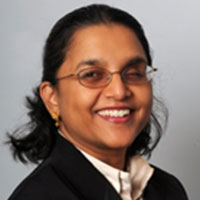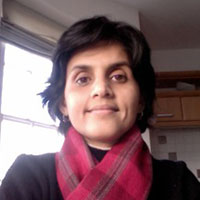Research and policy efforts towards greater female political participation have largely focused on women’s voting behaviour, and their representation as elected public officials. However, there are several other ways in which citizens can engage with the political and civic process. Using an original survey conducted in Uttar Pradesh, this article offers systematic evidence on gender gaps in a rich set of electoral and non-electoral participation metrics.
Women constitute half the world’s population, but they account for less than a quarter of the membership of national parliaments globally. In 2015, 12% of India’s national legislators were female; in the US Congress this number was 19%; and in the UK’s House of Commons, it was 29%. This political under-representation of women goes hand in hand with poor substantive representation of their preferences, as reflected in gender gaps in health, education, and economic opportunities worldwide. Using a composite index based on these four components (including political opportunities), the Global Gender Gap Report finds that the overall gap has in fact worsened over the past year, and estimates that it will take a hundred years to bridge the overall gender gap at the current rate of change (World Economic Forum, 2017).
On a more positive note, a body of rigorous research evidence shows that greater political participation by women does result in policy choices more attuned to women’s needs and concerns (Chattopadhyay and Duflo 2004, Iyer, Mani, Mishra, and Topalova 2012, Rehavi 2012). In fact, the benefits of political opportunities for women create benefits that extend beyond women, such as improved investments in children and lower corruption (Bhalotra and Clots-Figueras 2014, Brollo & Troiano 2016, Clots-Figueras, 2012, Dollar, Fisman, and Gatti 2001, Miller 2008, Swamy, Azfar, Knack, and Lee, 2001).
To date, both research and policy efforts towards greater female political participation have largely focused on two outcomes: women’s voting behaviour, and their representation as elected public officials. However, citizens who wish to have their voice heard in policymaking can engage with the political and civic process in many other ways: communicating with public officials, attending protests or rallies, taking part in written petitions or fund-raising, attending public meetings and speaking up in public forums. For instance, the fund-raising efforts by women like Jo Ann Robinson and Georgia Gilmore were crucial to the success of the Montgomery bus boycott in the US civil rights struggle of the 1960s (McRae 2018). Women’s rights activists in Morocco played a pivotal role in achieving a complete overhaul of the Islamic family law and the introduction of a new constitution in 2011 that “guarantees equality between women and men, prohibits all forms of discrimination against women and requires the State to promote women’s rights in their entirety” (Pittman and Naciri 2010, UN Women, 2015). These less visible forms of citizens’ political and civic engagement can also shape public opinion and electoral outcomes. A recent case in point is the US Women’s March in January 2017 and the #MeToo movement online, that seem to have galvanised more women into running for public office and changed the gender balance in the US Congress in the 2018 midterm election.
In order to provide systematic evidence on women and men’s participation across a range of political and civic activities, we conducted a survey of 2,573 women and men across 256 villages in 11 districts of Uttar Pradesh, India’s largest state (Iyer and Mani 2018). We collected information on a wide range of activities related to politics, under two broad categories: electoral and non-electoral participation. The first category included voting and candidacy (typical outcomes available from administrative datasets), and detailed questions about involvement in political campaigns, party memberships, and campaign contributions. The second category included activities such as attendance and participation at village council meetings, interactions with public officials at the village, block or district level and involvement with public petitions.
We have four key findings. First, the biggest gender gaps are in non-electoral political participation rather than in electoral participation. Specifically, women are 0.57 standard deviations1 behind men on electoral participation, but 0.89 standard deviations behind men on non-electoral participation. Among measures of non-electoral participation, the largest gaps we document are at the local level: while 44% of men have attended village meetings and 73% of men have tried to meet the village council leader (pradhan) in the last 12 months, the corresponding figures for women are only 17% and 43%. Among measures of electoral political participation, we find no gender gap in voting, but women are 7.1 percentage points less likely than men to be a member of any political party and 2.6 percentage points less likely to ever have been a candidate. The largest gender gap is in having heard a candidate speech in the past: 61% of men have done so, compared to only 23% of women. Notably, these gender gaps persist even after controlling for women’s lower literacy and wealth, and their social (caste and religion) backgrounds.
Second, we find that women lag behind men on several different personal characteristics that might affect political participation. Women have significantly lower knowledge about political institutions and electoral rules: they are 5-10 percentage points less likely to give the correct answer to a set of questions about political institutions. It is particularly striking that 27% of women give the wrong answer to the question of whether women can become panchayat members (that is, they answer “no”), despite the existence of a one-third quota. In addition, women lag behind men on their self-assessed leadership skills, they do not have much voice in key household decisions (for example, only one-third of women report having a high level of input into household repair decisions), and they face significant mobility restrictions (for example, 46% of women report requiring permission even to go to nearby places such as a friend’s house).
Third, these ‘supply-side’ factors account for only 34% of the gender gap in electoral participation, and 30% of the gender gap in non-electoral participation. By supply-side factors, we refer to factors that could plausibly be within a woman’s ability to change on her own (such as knowledge of political institutions and electoral rules, her self-perception about her leadership abilities, and her sense of her ability to achieve change in the political and personal domain). Women’s lack of voice in household decisions and restrictions on their mobility accounted for an additional 35% (12%) of the electoral (non-electoral) participation gender gap. This still left 31% of the electoral participation gender gap and 58% of the non-electoral participation gender gap unexplained.
Finally, we found that the presence of female pradhans did reduce the non-electoral participation gender gap, but by only a modest extent. For instance, women in villages with female pradhans are 6 percentage points more likely to try meeting with the pradhan, compared to an overall gender gap of 30 percentage points on this dimension. The presence of women pradhans had no significant impact on measures of electoral participation for women.
Our findings have implications for the design of policies aimed at bridging the gender gap. The picture we document suggests that policies designed to improve supply-side determinants of women’s political participation can have sizeable effects in bridging the gender gap. However, such policies will be unable to fully close the gender gap. Simply implementing gender quotas is also unlikely to bridge these gender gaps in political participation.
Notes:
- Standard deviation is a measure that is used to quantify the amount of variation or dispersion of a set of values from the mean value (average) of that set.
Further Reading
- Bhalotra, Sonia & Irma Clots-Figueras (2014), “Health and the political agency of women”, American Economic Journal: Economic Policy, 6(2): 164-197.
- Brollo, Fernanda and Ugo Troiano (2016), “What happens when a woman wins a close election? Evidence from Brazil”, Journal of Development Economics, 122: 28-45.
- Chattopadhyay, Raghabendra and Esther Duflo (2004), “Women as policy makers: evidence from a randomized policy experiment in India”, Econometrica, 72(5): 1409-1443. Available here.
- Clots-Figueras, Irma (2012), “Are female leaders good for education? Evidence from India”, American Economic Journal: Applied Economics, 4(1): 212-244.
- Dollar, David, Raymond Fisman and Roberta Gatti (2001), “Are women really the fairer sex? Corruption and women in government”, Journal of Economic Behavior and Organization, 46(4): 423-429.
- Iyer, Lakshmi, Anandi Mani, Prachi Mishra and Petia Topalova (2012), “The power of political voice: Women’s political representation and crime in India”, American Economic Journal: Applied Economics, 4(4): 165-193.
- Iyer, Lakshmi and Anandi Mani (2018), “The road not taken: Gender gaps along paths to political power”, World Development, forthcoming. Available here.
- McRae, EG (2018), ‘The Women Behind White Power’, The New York Times, 2 February.
- Pittman, A and R Naciri (2010), ‘Winning women’s rights in Morocco: Cultural adaptations and Islamic family law’, in J Gaventa and R McGee (eds.), Citizen action and national policy reform: Making change happen, Zed Books, London.
- Rehavi, M (2012), ‘Sex and politics: Do female legislators affect state spending?’, Working Paper, University of British Columbia.
- Swamy, Anand, Omar Azfar, Stephen Knack and Young Lee (2001), “Gender and corruption”, Journal of Development Economics, 64(1): 25-55.
- UN Women (2015), ‘Progress of the world’s women 2015-2016: Transforming economies, realizing rights’, United Nations Entity for Gender Equality and the Empowerment of Women (UN Women).
- World Economic Forum (2017), ‘The Global Gender Gap Report 2017’, Insight Report.




 21 May, 2019
21 May, 2019 





Comments will be held for moderation. Your contact information will not be made public.